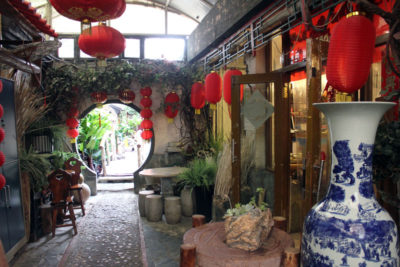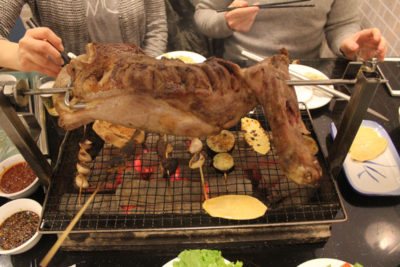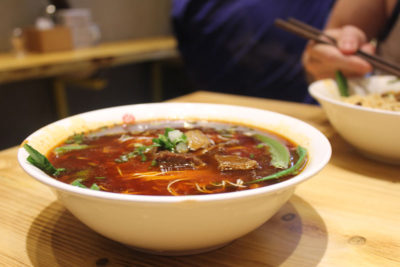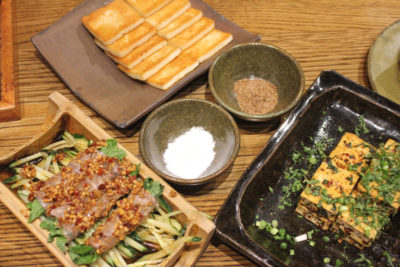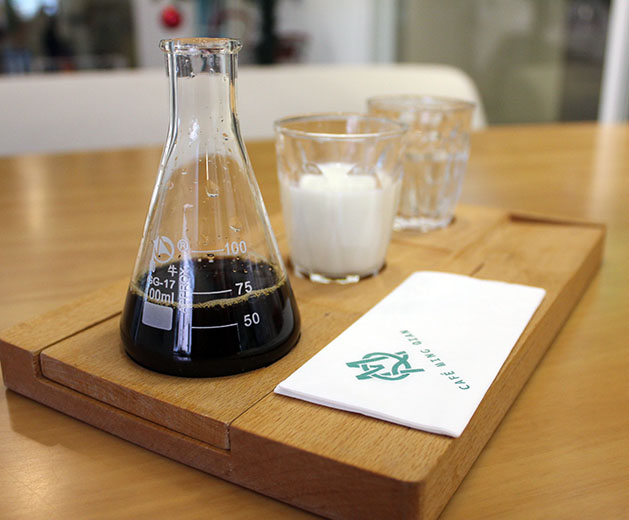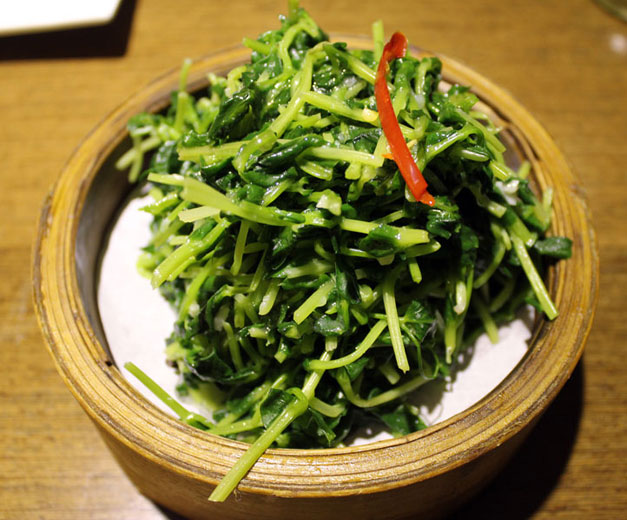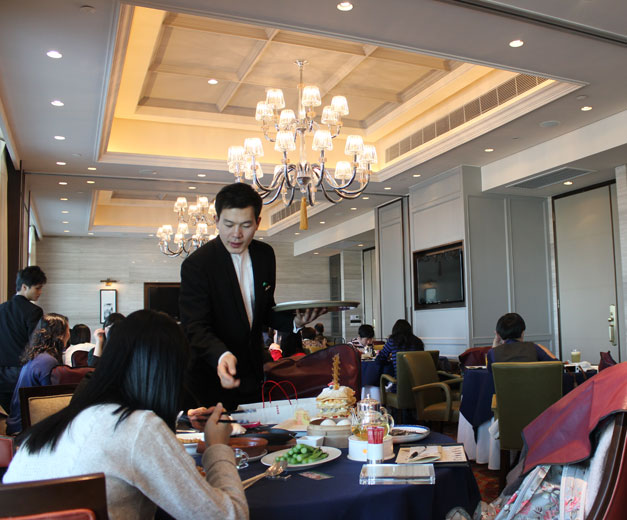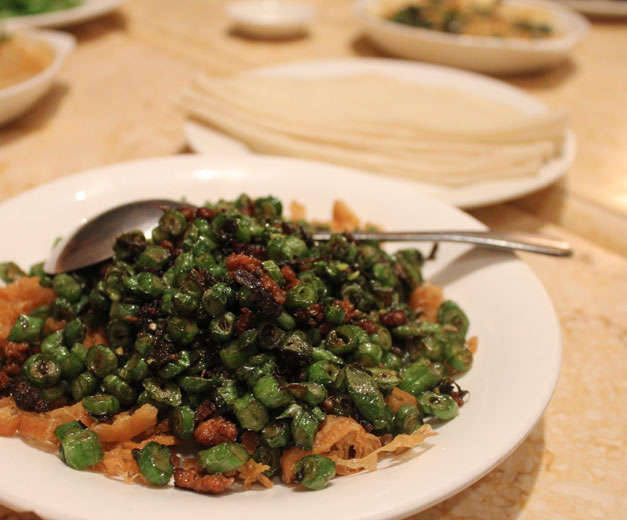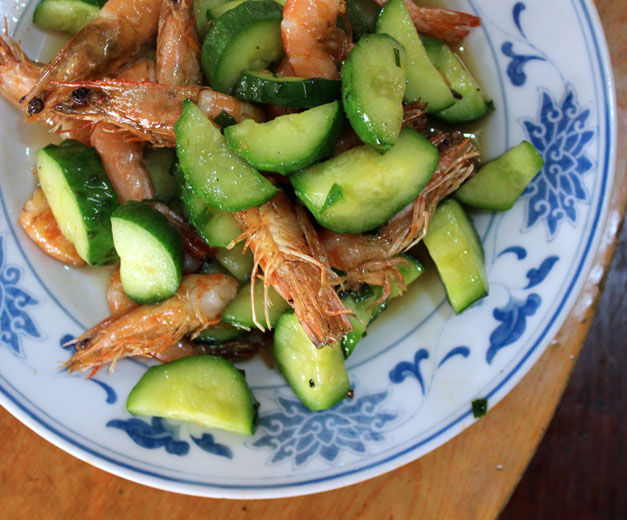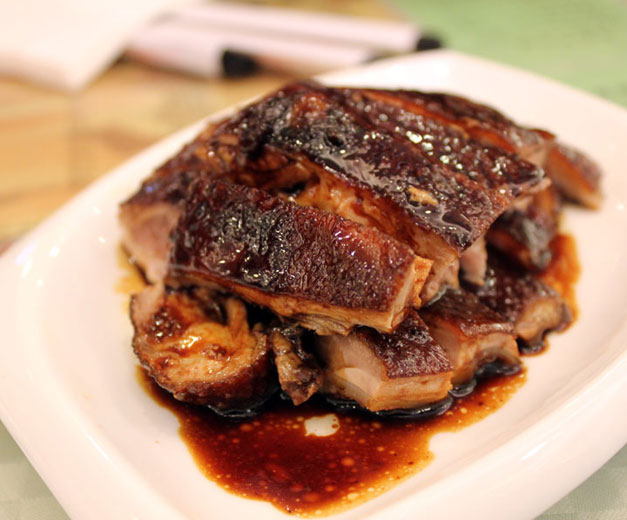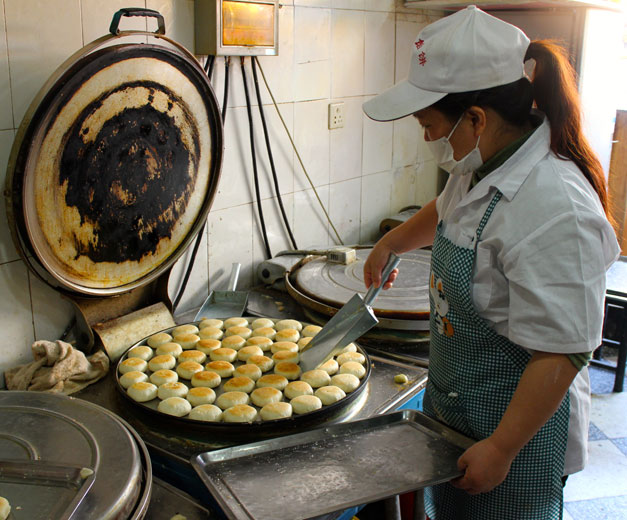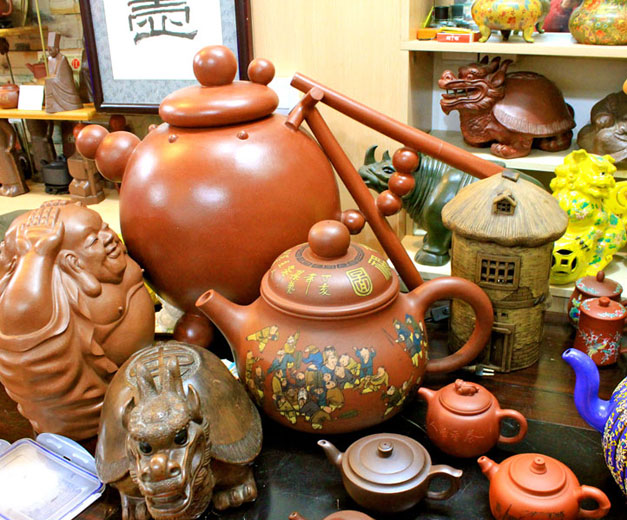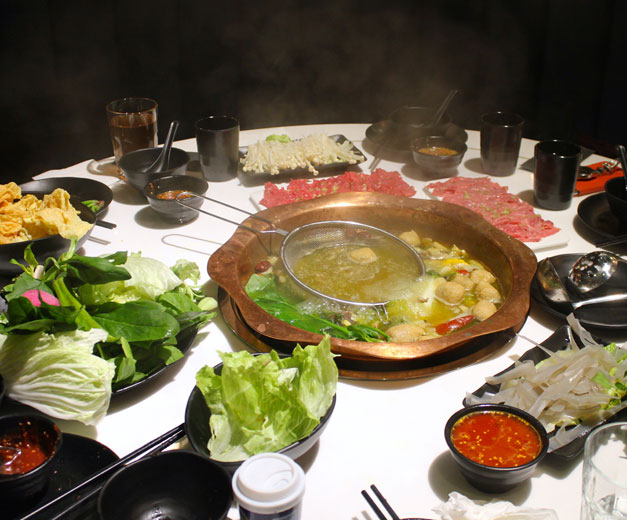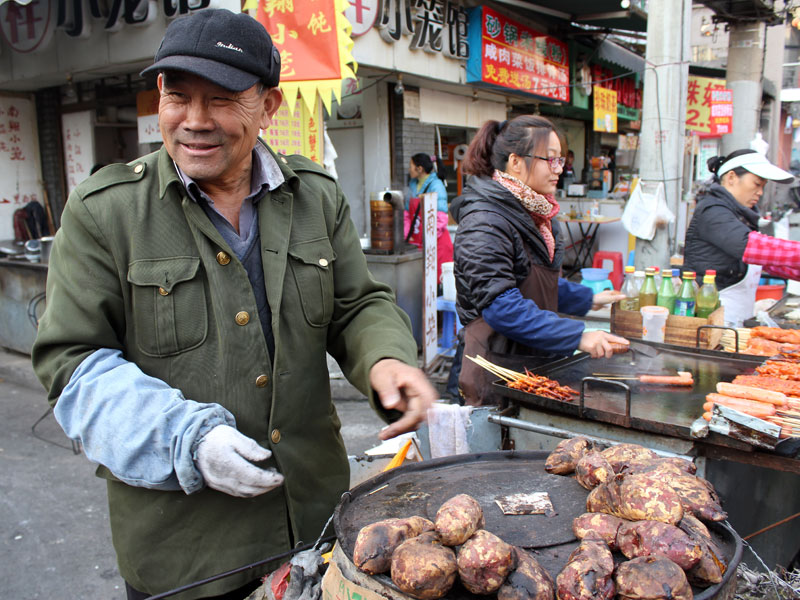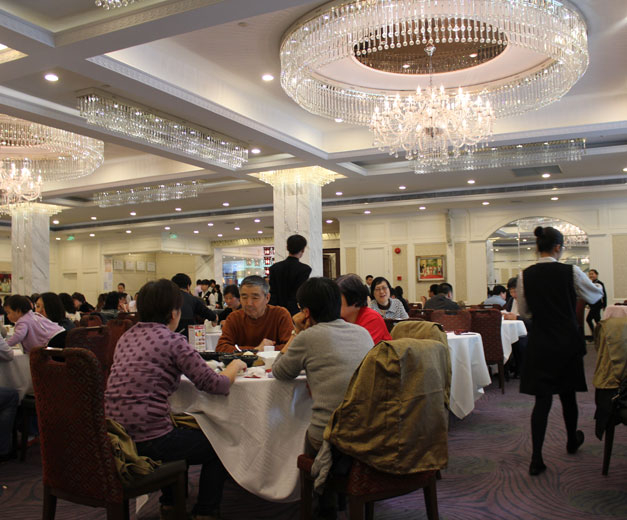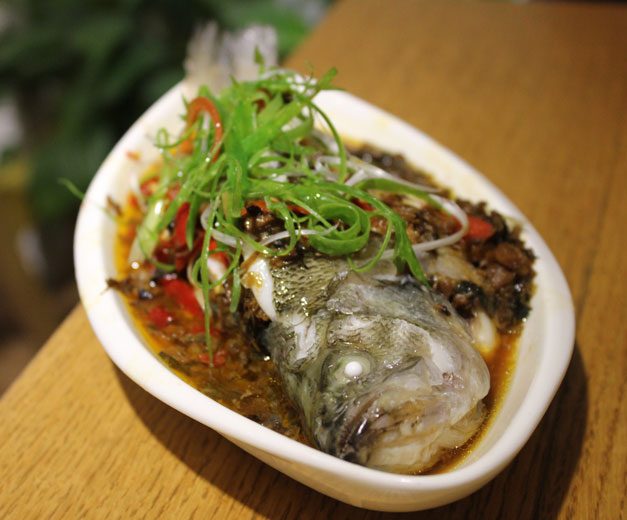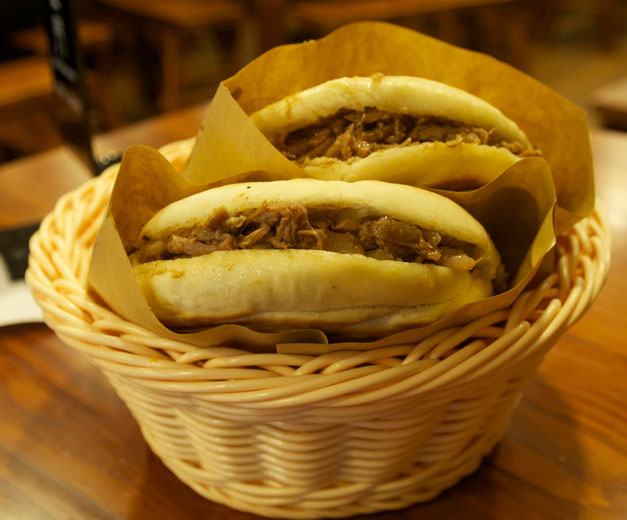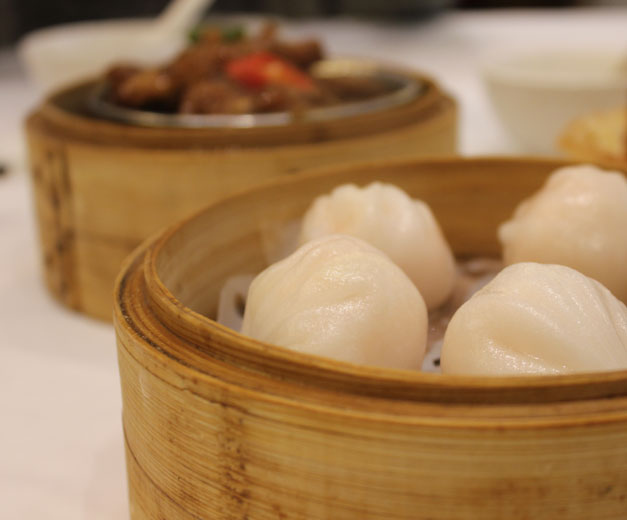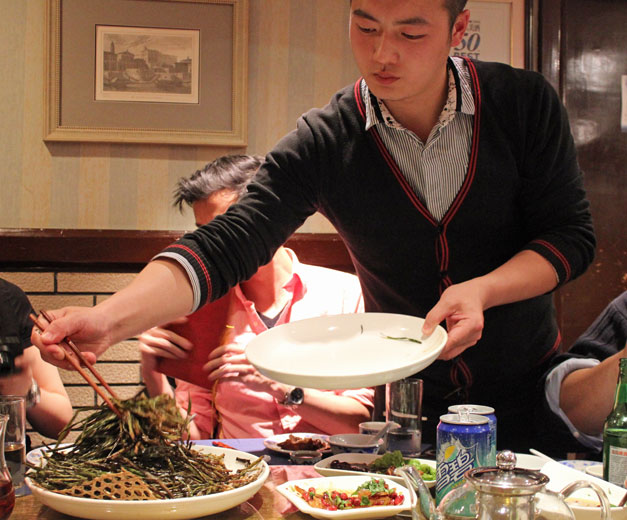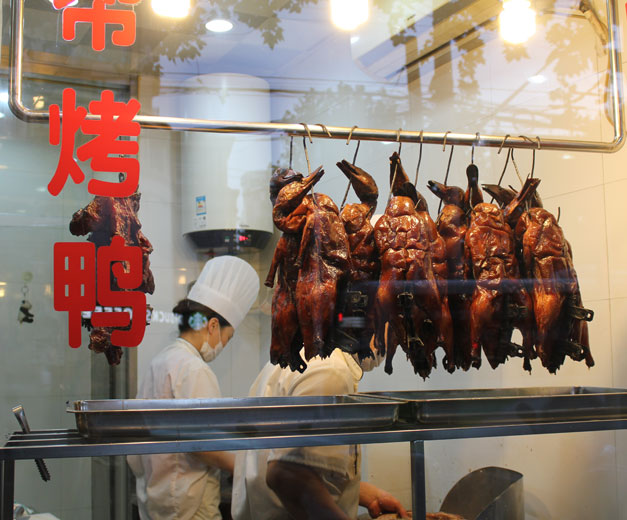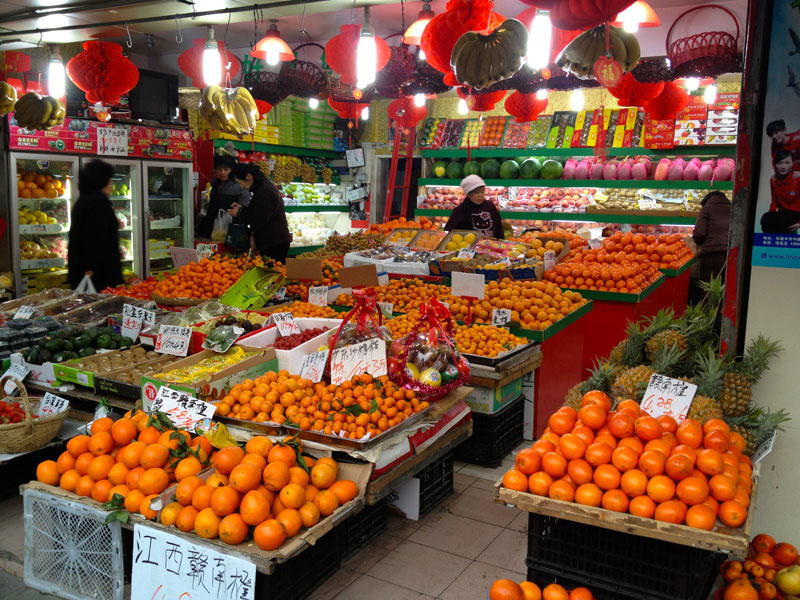We can't find the internet
Attempting to reconnect
Something went wrong!
Hang in there while we get back on track
Search results for "Jamie Barys"
Shanghai
Fu Chun Xiao Long: Shanghai Snack Attack
We’ve raved about the Shanghai-style soup dumplings at Fu Chun for years now, but let us let you in on a secret: There’s more to this tiny hole-in-the-wall than its xiaolongbao. Since 1959, the restaurant has been serving up benbang dishes, but little has changed on the menu or in the kitchen. A Huaiyang snack shop, Fu Chun admittedly skews Shanghainese in its regional flavor profile, which means extra sugar and a lot of pork. Try the traditional deep-fried pork cutlet (炸猪排, zhà zhūpái). Pounded thin before hitting the deep fryer, these fatty flanks are served sliced with a side of black rice vinegar – a dip helps cut the grease.
Read moreShanghai
Best Bites 2016: Shanghai
Shanghai's dining scene was abuzz with controversy this fall as the Michelin Guide landed in the city for the first time ever. You can't please everyone, but no one seemed happy with the disproportionate number of Cantonese restaurants that were recognized. Thankfully, there's still plenty of delicious variety in the city, starred or not, and we continued to chow down across the price and regional spectrum. A Da Congyoubing After 34 years of making the cult favorite scallion oil pancake, Mr. Wu was shut down by the government in September for not having the proper licenses. Thanks to the serious outcry from the city’s foodies, the district government helped him expedite his licensing, and delivery start-up Ele.me found a new spot just a couple blocks from his apartment.
Read moreShanghai
Wuyuan Bingjia: Baked in Time
When Wuyuan Bingjia first opened in 1936, it was one of many Shanghai-style bakeries around town, churning out trays of benbang dim sum dishes to be eaten on the go or taken home and enjoyed with the family. Now, as the city grows skyward and Shanghainese palates skew more international, these old-style bakeries are slowly dying out. Wuyuan Bingjia is one of the last ones standing, and it’s not thanks to the service. (Word to the wise: Be ready to order when you get to the cashier or you’ll get an earful from the waitstaff.)
Read moreElsewhere
Baoyuan Jiaozi Wu: Dumpling Rainbow
Baoyuan Jiaozi Wu was locally famous in Beijing for years, then U.S. Secretary of the Treasury Jacob Lew turned the sprawling dumpling house into a Chinese viral sensation when he lunched there in 2013. The modest meal came just weeks after Xi Jinping became the President of the People’s Republic and launched anti-corruption campaigns that tried to eliminate extravagant dinners replete with sea cucumbers and Moutai baijiu. The meal for three at Baoyuan came to just RMB 109 (US$16) – a jaw-droppingly low number for a lunch for officials in China. Netizens around the country hailed the secretary for his low-key, local choice.
Read moreElsewhere
Tan Hua Roast Lamb Leg: DIY BBQ
Inner Mongolia is famous in China for its lamb and all the different ways it’s prepared there, whether it’s braised lamb spine or thinly sliced marbled cuts dip-boiled in a hotpot. Lamb roasted whole is always a great choice, but the more common version (and the one you won’t need to pre-order days in advance) is roasted lamb leg (烤羊腿, kǎo yáng tuǐ). Legend has it that Genghis Khan’s personal servant was worried about how much of the nomadic conqueror’s time was taken up by waiting for whole lambs to be grilled to sate his hunger, so he asked the chef to prepare roasted lamb legs instead.
Read moreShanghai
Miss Ali: All About the Lamb
Fun fact: More than 70 percent of the meat eaten in China is pork. And while stuffing yourself with xiaolongbao and hongshao rou is a must when eating in Shanghai, it can be nice to have a respite at halal restaurants like Miss Ali. Yan Ali, the owner and namesake of the restaurant, arrived in Shanghai from Xinjiang – China’s predominantly Muslim province in the country’s far northwest, where she previously hosted TV shows. Ali didn’t like the way her native cuisine was often represented in Shanghai – with waiters robed in garish “costumes” and performing songs and dances from their region – and decided to create a more accurate representation of the restaurants of Xinjiang.
Read moreElsewhere
Pang Mei Mian Zhuang: Sinuses Beware
“Can you eat spice?” the waitress asked after taking our order. Her hand hovered hesitantly over the cash register. “Yes,” we replied. “But... Can you?” she asked again, looking to the other waitresses for help. “Yes!” we responded emphatically, trying to vocally convey our love of the tongue-tingling, lip-burning action we had come for. “Umm... These are Chongqing noodles. They are really spicy,” she said with her hand still in a no-man’s-land somewhere between our money and the cash register, unsure whether our foreign palate had what it took to slurp down a bowl of noodles from China’s spiciest city.
Read moreShanghai
CB on the Road: Chengdu's Fly Restaurants
When you’re in the capital of Sichuan province, snacking is a way of life. Noodles made of bracken, wheat, chickpeas, mung beans and more, as well as tofu puddings and dumplings, make up the city’s “small eats” (小吃, xiǎochī) scene, served from what’s colloquially known as “fly restaurants.” A step above street food, these family-owned eateries are so called because they attract diners like flies, despite what might seem like a less-than-hygienic atmosphere, because the food is too good to miss. Find a hole-in-the-wall that has more diners than stools, and order one of these local specialties for a delicious meal.
Read moreShanghai
Ask CB: Shanghai's Summertime Superfruit?
Dear Culinary Backstreets, I keep hearing buzz about “yangmei” season in Shanghai. What’s all the fuss about this fruit? What’s in a name? Shakespeare could just as easily have written, “A yángméi (杨梅) by any other name would taste as sweet.” This little red Asian fruit has a plethora of monikers: Myrica rubra, Chinese bayberry, yamamomo, Japanese bayberry, red bayberry and waxberry. But a decade ago, the sweet and sour fruit was rebranded as the yumberry in the United States (where it is sold in juice and powder form, but not fresh, due to an import ban on the live fruit) to stand out from other exotic “superfoods.”
Read moreShanghai
In & Out: No Burgers Here
In & Out arrived in Beijing years ago to rave reviews, but the Yunnan restaurant only just settled in Shanghai, confusing homesick Californians with its name. Instead of Double-Double burgers and Animal-Style fries, it serves cross-the-bridge noodles (过桥米线, guòqiáo mǐxiàn) and fried potato balls (土豆球, tǔdòu qiú). While most Yunnan restaurants in China span the whole province’s cuisine, from tea leaf salads to crispy adzuki beans, In & Out’s menu is (mostly) specific to Lijiang, a city deemed a UNESCO heritage site that lies about halfway between Shangri-La and Kunming, the provincial capital, and is home to the Naxi and several other ethnic minorities
Read moreShanghai
Yi Zhang Hong: Feel the Burn
Healthy eating and Chinese food are often hard to combine, but Karen Chen has discovered the recipe. After the success of Jianguo 328 (a homestyle Shanghainese restaurant that forgoes MSG and uses filtered water to boil its excellent noodles), the Taiwanese restaurateur decided to look west – where spice is king – for her next venture: Yi Zhang Hong. The friendly Sichuan restaurant is cobbled together with a narrow staircase leading up to cheerful dining rooms over three floors. On each level, bright folk art hangs on white walls above long banquettes and blond wood tables, and the red-tiled bar on the first floor is decorated with bottles of imported wine and beer and canisters of local tea.
Read moreShanghai
Every Shade of Green: Shanghai's Spring Foods
In Shanghai, wet markets hold the telltale signs that spring is finally upon us. Stalks of asparagus as thick as a thumb spring up first, alongside brown and white bamboo shoots so freshly pulled from the earth that dirt still clings to their fibrous shells. But the most exciting spring green is fava beans (蚕豆, cándòu), also known as broad beans. Their short season in Shanghai – usually just about four to five weeks – means they’re in high demand, and stalls are filled with workers shelling the labor-intensive beans by the bushel.
Read moreShanghai
Shanghai’s Top 5 Hotpot Restaurants
Whether you call it steamboat, hotpot, Chinese fondue or shabu shabu, one thing is certain: Nothing warms you up in the depths of winter like a steaming bowl of bone broth. As winter continues its dreary hold, here are five of the best places to get hotpot in Shanghai.
Read moreShanghai
Tangyuan: Light Up First Night
Lantern Festival (元宵, yuánxiāo, or “first night”) is the 15th day of the Chinese New Year, and marks the last day of Spring Festival. This “first night” is actually the first full moon of the lunar new year, and in the Year of the Monkey it falls on February 22. On this holiday, it’s customary for revelers to light red lanterns, and in Shanghai, revelers typically head to Yu Gardens, a busy central location known for its Lantern Festival entertainment. Those looking to avoid the crowds at Yu Gardens may head instead to the International Magic Lantern Carnival taking place near the Mercedes-Benz Arena in Pudong, where innovative lighting displays take over an area the size of 30 football fields (with an entrance fee). But one of the most important ways of celebrating the holiday involves food – specifically, the sweet stuffed dumplings called tāngyuán (汤圆).
Read moreShanghai
Top Buns: Shanghai’s Best Baozi
Bāozi (包子), or steamed buns, are a basic, on-the-go meal. It’s rare to come across a shop selling these buns for more than 1.5 RMB (US$0.25), and yet, the past five years have seen a dramatic rise in the stature of this humble dish – thanks mostly to celebrity chef David Chang, whose Momofuku pork bun has become world-famous. They even got a domestic boost in 2013, when President Xi Jinping visited a local 60-year-old baozi shop in Beijing. (Now, thanks to an hours-long queue to try the “President Special,” that chain is looking to go public.) Legend has it that baozi date back to the Three Kingdoms period (A.D. 220-280) and are credited to Zhuge Liang, a renowned military strategist who was also an eccentric foodie. He invented both this steamed bun and our favorite breakfast treat: the jianbing
Read moreShanghai
Shanghai’s Top Coffee Spots, Pt. 2
Since we last wrote about the best places for a cuppa back in 2014, Shanghai has become the city with the third-highest number of Starbucks in the world, and these new shops serve flat whites and cold brews from an interactive barista bar. We should expect more of these fancy cafés, as the Seattle coffee chain is planning to double its current number of stores in China by 2019 – going from zero to 3,000 in 20 years.
Read moreShanghai
The Shanghai Soup Dumpling Index: Can You Measure Good Taste?
Back in 2012 when Culinary Backstreets still had that new car smell, we wrote our first article on xiaolongbao. The investigative report detailed the bun’s regional variations – Shanghai versus Nanjing – and called out our two favorite places to eat each city’s specialty soup dumplings. Understanding, appreciating and loving these local specialties is a part of life for residents of pork-obsessed Shanghai. Arguing the merits of different restaurants’ xiaolongbao is a citywide pastime for both locals and expats alike, but one man has taken the fascination further than the rest of us combined.
Read moreShanghai
Zifantuan: Belle of the Rice Ball
One of the seven necessities of Chinese daily life, rice is eaten in many forms throughout the day, including – and especially – at breakfast. Congee is undoubtedly China’s best-known breakfast food, but less famous globally, and wildly popular locally, is the unassuming rice ball (饭团, fàn tuán).
Read moreShanghai
Shanghai's Top 5 Street Foods
Shanghai is a street food lovers' paradise, with carts slinging dumplings, pancakes, noodles, buns and grilled meats on sidewalks across the city, morning, noon and night. These are a few of our favorites. 1: Shengjianbao A Shanghai specialty, shēngjiān mántou (生煎馒头) – or shēngjiān bāo (生煎包), as they’re known everywhere else in China – are juicy pork buns wrapped in bread dough, then arranged in a flat, oil-slicked wok in which the bottoms are deep-fried till they are crispy. Although shengjian mantou can be found on most street corners in the morning, we’re especially fond of the delicious misshapen buns at Da Hu Chun. A Chinese Time-Honored Brand (老字号, lǎozìhào), Da Hu Chun has been splattering grease since the 1930s and, nearly 80 years later, has six restaurants across Shanghai. The venue’s chefs use the rare “clear water” technique, frying the pinched side of the dough face-up to create little Frankenstein buns that might not be as photogenic as the more common “troubled water” variety, but that have a thinner skin that gets extra crisp – and we’ll sacrifice good looks any day if it means better flavor. 2: Guotie
Read moreShanghai
Charmant: Old Reliable
Editor’s note: We regret to report that Charmant has closed. We’ve mentioned Charmant before on Culinary Backstreets, giving it a nod for its night-owl dining opportunities (it closes at 2 a.m.). But this restaurant tastes good all day long and has something going for it that few Shanghai restaurants have: consistency. After more than seven years of loyal patronage (not to mention the restaurant's 11 years of operation since opening in 2004) and Charmant’s split from its parent company, which runs the equally successful Taiwanese chain called Bellagio, we have yet to notice a slip in quality.
Read moreShanghai
Dwarf's Pastries: Little Bites, Big Flavor
Shouning Lu is known as Crawfish Street, with street food vendors often stewing, grilling and frying up the same seafood dishes up and down the one-block stretch. But there’s one land-lubbing vendor that has carved out a niche for itself: Ǎizi Xiànbǐng (矮子馅饼), or Dwarf’s Pastries.
Read moreShanghai
Best Bites of 2014: Shanghai
Editor's note: The year is coming to an end, which means it's time for us to look back on all the great eating experiences we had in 2014 and name our favorites among them. Elixir Health Pot We used to ignore the steamy glass windows of Elixir Health Pot when we walked past. “Healthy is not how we take our hotpot,” we thought with our noses in the air, ignoring the sweet smell of ginseng and spicy aroma of chili peppers simmering in pork broth. Then a trusted foodie friend asked us if we’d tried their wulao meat. Another mentioned their collagen broth a week later…. So last winter, we gathered a crew of longtime hotpot fans and headed to the healthiest steamboat in town. Turns out it’s also the best all of us had ever had, and it’s now our warming go-to as soon as the temperature drops. Best not to think too hard about all the opportunities we missed over the years; we’re more than making up for it now.
Read moreShanghai
Shanghai's Top 5 Lunch Sets: Midday Meal Deal
Shanghai offers a huge range of dining at every price point imaginable. Fortunately for us, cost is not necessarily commensurate with quality in this town; you don’t have to break the bank to eat well. In fact, some of our favorite eateries offer bargain set lunches. Mi Xiang Yuan Hidden down an alley, Mi Xiang Yuan, a Shanghainese joint owned by a local celebrity chef and his family, serves affordable set lunches that bring in the crowds. Try their marinated pork rice bowl (卤肉饭, lǔròu fàn) or "lion’s head meatballs" (蛤蜊牛蒡肉圆套餐, gélí niúbàng ròu yuán tàocān), and you’ll also get a side of soup, tofu and vegetables of the day plus a bowl of rice, all for less than 30 RMB ($5), no matter which benbang main you try. You can’t beat that price in the Xintiandi neighborhood.
Read moreShanghai
Mid-Autumn Mooncakes: The Stuff of Legend
Mid-Autumn Festival (中秋节, zhōngqiūjié) lands on the 15th day of the eighth lunar month, relatively near the autumnal equinox; in 2014, it falls on September 5. Also sometimes called Mooncake Festival, it is a public holiday in China and Taiwan on which families gather to give offerings to the full moon, float sky lanterns and eat mooncakes (月饼, yuèbing). A culinary tradition with legendary roots, mooncakes are sold everywhere from grocery stores to five-star hotels and come with competing origin stories that relate how these sweets came to represent the holiday.
Read moreShanghai
CB on the Road: Xiamen's Island Flavors
A scenic highway wraps around the island city of Xiamen, allowing easy access to the mountainous interior and rocky coastline, but on the east coast the natural scenery gives way to man-made propaganda. Three-story-high characters facing the South China Sea dominate the skyline. As red as Mao’s Little Book, these towering characters proclaim “One Country, Two Systems, United China,” a stern reminder visible to the residents of Jinmen, a Taiwanese island less than 2 kilometers from the ancient port city’s shores. This sightline marks the shortest distance between the People’s Republic and the Republic, and while government policies may differ greatly depending on which side of the Taiwan Strait you call home, the food culture is remarkably similar.
Read more


